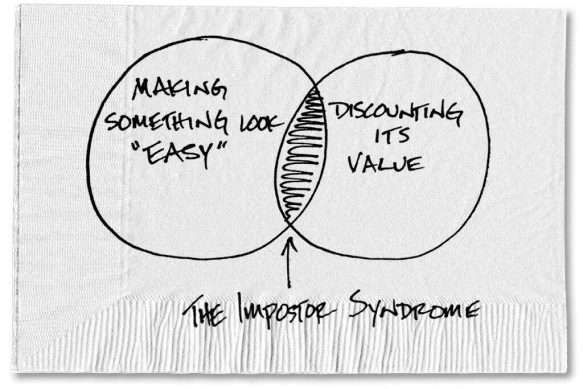Arlan Hamilton, age 40 is the Founder of Backstage Capital and she has talked about her lifelong goal of having seven different revenue streams in order to diversify her income. When she published a book in May, she revealed that her book was her seventh income stream. If you don’t know about Arlan’s story, check out her amazing rags to riches story here: How This Woman Went From Homelessness to Running a Multimillion-Dollar Venture Fund
Why seven revenue streams? Well, it turns out the average millionaire has seven revenue streams so it’s a good goal to have to be financially secure. Beyond owning an airbnb unit or relying on stock dividends, there are several different strategies to consider (and we hope more attainable). We set out to learn about additional ways to bring in some money during this odd time.
-
Acorns app:
Using the Acorns application on your phone is a passive way to earn money. It allows you to invest spare change automatically (if you opt in) and lets you invest as little as $5 any time or on a recurring basis into a portfolio of ETFs (exchange traded funds). Your investments are then diversified across more than 7,000 stocks and bonds, and Acorns automatically rebalances your portfolio to stay in its target allocation. When you sign-up, the app recommends the right plan for you based on your goals, employment, and income. There is a “Lite” version for $1 a month so it’s a great way to try out investing on a smaller scale. Several friends of mine use it and have saved thousands of dollars by investing small $5 and $20 amounts over time.
-
Teach a Course for Money:
Have you ever spent thousands of dollars on a class and wanted to share the knowledge you gained with others? Me too and getting paid to share knowledge sounds even better. There are several ways to go about teaching something you already know or have recently learned and want to share with others. If your course is popular, it could garner several thousand dollars a month. The top three platforms to earn and teach are the following:
Udemy - Udemy accepts payment through PayPal or Payoneer and uses a revenue sharing model. You’ll earn the most if you sell directly to students using an Instructor Coupon. If students find your course through Udemy’s marketing, you’ll earn a little less.
Skillshare - Like Udemy, it’s an online course marketplace that advertises your classes to students around the world. Skillshare uses a royalty system, meaning your earnings will vary based on the amount of watch time you receive from Premium members.
Teachable - Teachable walks through the course creation process. Teachable doesn’t take variable fees from your earnings. While that is a bonus, it means that you’re in charge of marketing your course.
As Ian Chandler wrote in his blog “Wealthfit”, “Let’s say that just 1 in a million people is interested in learning from you. That doesn’t sound good, right? But also consider that 3 billion people are online. So even if just 1 in a million people wants to learn from you, you have an audience of 3,000 people! And multiply 3,000 by the price of your course, and…well, you get the idea. It adds up.” For more tips on earning while teaching, see this article for tips for success: Create and Sell Online Courses: 4 Steps to Get Paid to Teach Others
-
Build An eCommerce Shop:
Shopify: If you know about Shopify, you probably already know how easy it is to set up an online store since they walk through each step including ecommerce setup. They can also market your products for you. It’s an incredibly easy platform to use and so if you want more control over selling your items, it’s an amazing platform. They have a dedicated line to help people get set up as well.
CafePress: CafePress allows you to sell items that feature a digital design. If you're a great graphic designer (or a wannabe graphic designer like me), you could create a number of designs that would fit different formats such as shirts, hats, and cups, and earn a commission when they sell. If you have an idea for a design, it could be created using canva.com and uploaded into CafePress.
Bonfire: If you have a cool t-shirt design in your head and don’t want to carry the inventory, check out this site for a bit of added income. Sell Shirts Online | Design & Sell T-Shirts Without Inventory
Without it being an obstacle for those who may be less tech-savvy, people can create a storefront within a few hours and many who take advantage of this option can earn $500 to over $1000 a month. It takes some time to set up but if you harness your curiosity and have a creative bone in your body, it’s well worth it.
-
Write a Book or an Ebook:
Ever had an idea that you were dying to write about but didn’t think you could pull it off? Before you roll your eyes, consider that if you’re able to write 200 words a day, for ten months, that could easily add up to be a book. During the pandemic, it’s been on many people’s accomplishment lists so why not? If you’d rather write an ebook, that’s a great option too. I recently bought one for $30 on digital marketing and noticed she’d sold over 500 of them. Not a bad way to gain more money based on her expertise.
Here are some curated articles on how to write a book or an ebook topic:
How to Write a Book [Step-By-Step Guide] by a 4X New York Times Bestselling Author
-
Create a Podcast:
When you are passionate about a niche that you know is not a super common topic, see if it’s a topic in a podcast search. As Seth Godin once said, “Small is the new big” meaning if it’s a niche topic, go for it. I bet millions of midlife Americans are interested in moving to Europe post-pandemic for example. What would they need to know about to make that dream happen? Check out https://www.listennotes.com/ to see if your particular interest/topic you want to discuss already exists. Oftentimes you may be surprised. For example, there aren’t too many podcasts that cover midlife advice. Not only is the population huge in this age group but it’s also a unique stage of life. According to Statista, 22% of people age 55+ are podcast listeners and this is predicted to grow by 10% over the next few years. To learn about the different revenue models when creating a podcast, check out these articles on how to do it successfully:How to Generate More Revenue from Your Podcast | The ManifestHow Do Podcasts Make Money in 2020? Here Are 8 Intriguing WaysA few more tips here on how to make money from podcasts: 12 Ways to Monetize a Podcast - Plus My Actual Results
-
Produce an Audiobook:
ListenUp Audiobooks is an option for authors. In addition to working with traditional publishers, they work with small publishers and authors on a fee basis, and can also handle distribution to Audible owned by Amazon. Of course, Amazon has a platform that helps create and sell audiobooks on Audible and iTunes and it’s called ACX. They have a higher royalty fee though. If you have a great idea and can teach a difficult skill like stock trading, or online marketing, you can create a significant monthly income with the right volume of audiobooks.
-
Do Small Jobs Online:
Amazon's Mechanical Turk platform is one way you can earn money. It won't earn you loads but if you're looking to take on smaller jobs that can be done in a few minutes each, by piling them together, you could earn some cash that might help add to your monthly revenue stream.
Play around with different ideas and different platforms. It’s a great way to learn how to adapt, learn, and grow revenue using different tools. It’s possible to gain a following about something you already know.
Reviewed & Recommended:
Here’s a video about other types of revenue streams for the savvy investor:
The different types of income streams + Ideas to increase your income
Online Business Tips:
| MORE ARTICLES
Emily’s vision for illume hire developed as part of her journey from a startup-curious sales and media professional to co-founder and CEO. Her passion is to provide resources to support professionals with 20+ years experience. Emily was part of the founding leadership team of Age Equity Alliance, a non-profit focused on the benefits of an intergenerational team.







